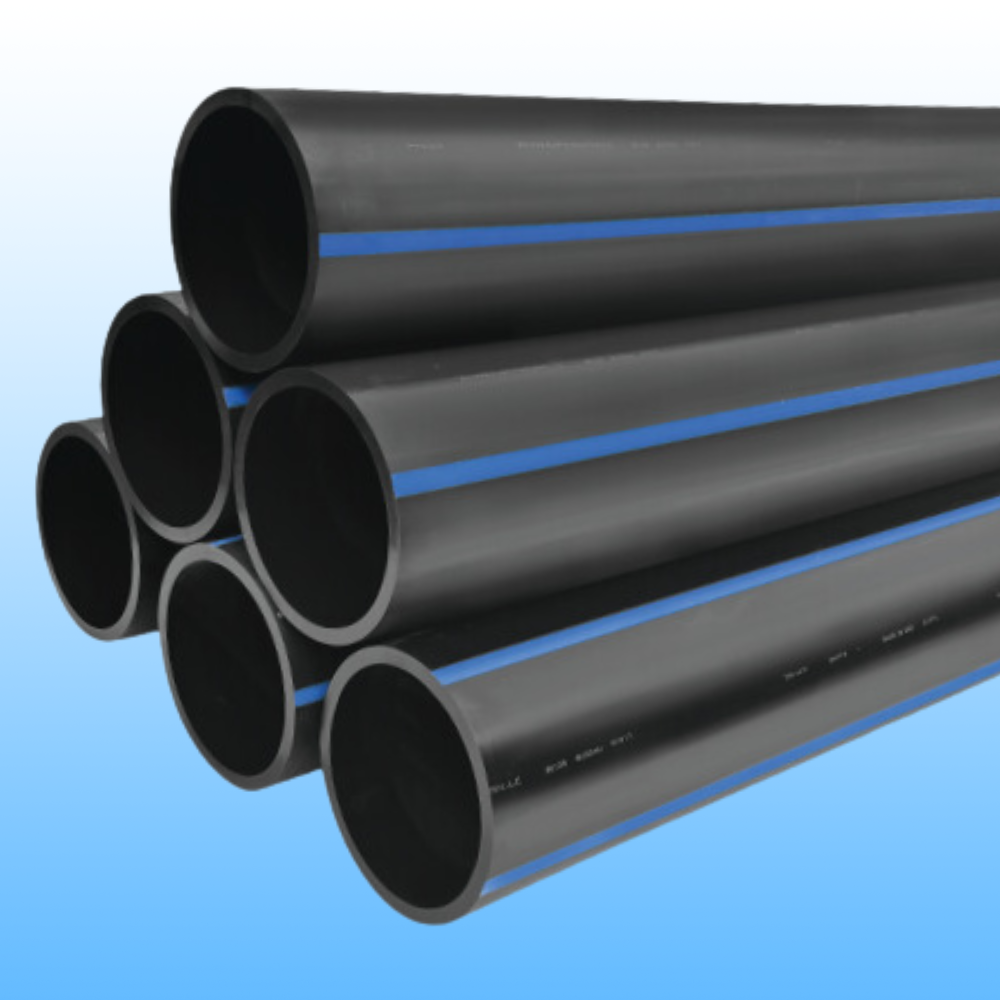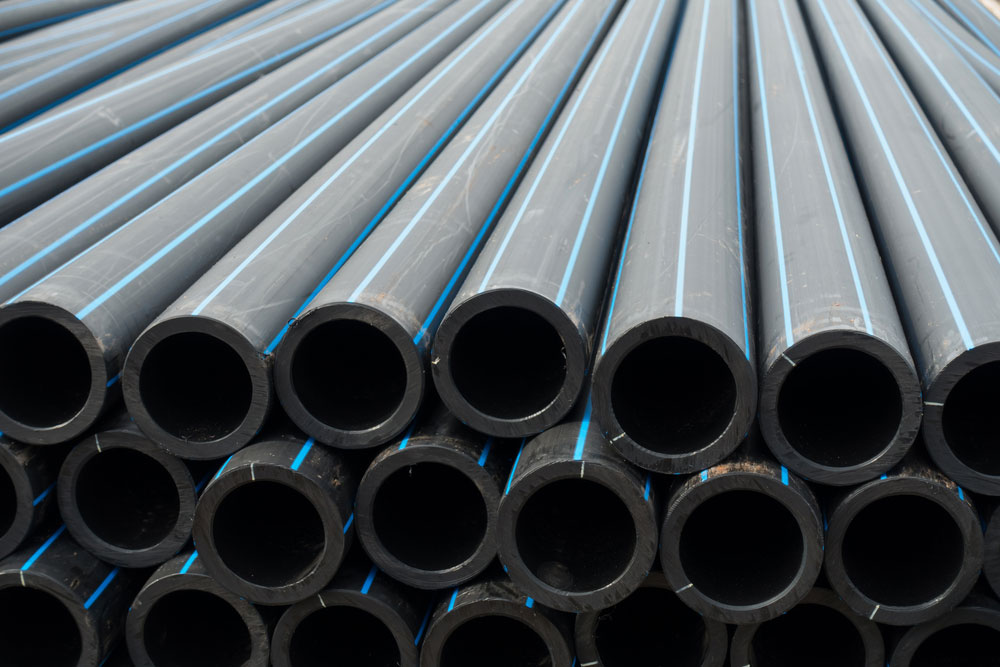In-Depth Look to hdpe pipe fittings Midland TX and Their Applications
The Important Actions for Successful Installment of HDPE Pipe in Your Following Job
Successful installation of HDPE pipe needs cautious preparation and execution. Secret steps consist of reviewing task requirements, preparing the website, and picking correct signing up with strategies. Each stage plays an essential duty in ensuring the stability and efficiency of the pipeline. Comprehending these necessary actions can substantially affect the total success of the task - Texas hdpe pipe manufacturer. Nevertheless, the nuances of each step may hold the trick to conquering typical obstacles encountered throughout installment
Comprehending the Conveniences of HDPE Pipeline
High-density polyethylene (HDPE) pipe supplies various benefits that make it a favored selection for numerous applications. Its high resistance to deterioration and chemicals assurances resilience popular environments, greatly expanding the life expectancy of installations. In addition, HDPE's flexibility enables much easier installation, especially in challenging terrains, as it can bend without damaging. The lightweight nature of HDPE pipe streamlines transportation and handling, minimizing labor expenses throughout installation.
HDPE pipe is understood for its reduced friction coefficient, which improves liquid circulation and minimizes energy usage. Its smooth building lowers the danger of leakages, adding to much better source management and ecological protection. Additionally, HDPE is recyclable, lining up with sustainable practices and decreasing ecological influence. In general, the mix of toughness, adaptability, and eco-friendliness makes HDPE pipe a remarkable selection for a vast array of projects, from water circulation to industrial applications.
Planning Your HDPE Pipeline Setup
When preparing a setup of HDPE pipe, mindful consideration of a number of essential factors is vital to secure a successful project. Job managers have to assess the certain needs of the pipeline, consisting of the meant use, circulation rates, and ecological conditions. Comprehending these specifications will direct the selection of proper pipe measurements and material grade.
Next off, timelines must be established, considering procurement schedules and any kind of prospective delays. Control with regional authorities for licenses and regulatory conformity is likewise crucial. In addition, a comprehensive budget must be prepared, incorporating all expenses related to products, labor, and machinery.
It is important to involve a qualified team experienced in HDPE pipeline setup. Their competence will certainly help reduce risks, assurance adherence to market criteria, and ultimately add to the task's success. Extensive preparation lays the foundation for a smooth installation process and resilient efficiency of the HDPE piping system.
Preparing the Site for Installation
Correct site preparation is important for the effective installation of HDPE pipeline. Before installation begins, the website needs to be extensively assessed to ensure it fulfills all necessary demands. This consists of evaluating the ground for existing structures, utilities, and potential risks that might restrain the installment procedure.

Appropriate elevation and placement need to be established to maintain a consistent slope for drainage purposes. Proper water drainage around the installation site is also crucial to avoid water buildup, which can bring about issues down the line.
Strategies for Joining HDPE Pipelines
Achieving a dependable connection in between HDPE pipelines is important for making sure the integrity and durability of the installation. Various techniques exist for joining these pipelines, each matched for different job requirements. Combination welding is just one of the most typical methods, utilizing warm to bond the pipeline ends with each other, developing a smooth and sturdy connection. This method can be additional categorized right into outlet fusion and butt blend, depending on the pipe setups.
Mechanical installations are one more option, utilizing clamps and threaded adapters to join areas of HDPE pipeline. While usually faster to install, they may need extra maintenance with time. Electrofusion is a customized technique that involves using electrical current to warmth and fuse the pipes through particularly created fittings, making certain a strong bond. Picking the proper signing up with strategy is important, as it directly influences the general performance and integrity of the HDPE piping system in the designated application.
Testing and Assessment of Installed Pipes
The testing and examination of set up HDPE pipelines are crucial to ensuring their capability and longevity. This process encompasses visual assessment methods, pressure testing methods, and leak discovery treatments to identify potential concerns. By employing these methods, experts can confirm the stability of the installment before it is taken into use.
Aesthetic Examination Techniques
Using reliable visual inspection techniques is essential for assuring the stability of installed HDPE pipelines. Inspectors ought to systematically take a look at all noticeable areas of the pipe to recognize any kind of indications of damages, misalignment, or incorrect setup. Key indicators to evaluate include joint integrity, surface irregularities, and connections. Inspectors may make use of tools such as multiplying glasses or video cameras to improve presence and information. It is important to look for indications of environmental stress, such as twisting or extreme flexing, which could blog here compromise performance. Constant documentation of searchings for enables for tracking changes gradually and helps overview needed fixings. By adhering to well-known aesthetic assessment procedures, task teams can notably decrease the risk of future failures and ensure long-lasting reliability of the piping system.
Pressure Evaluating Techniques
Visual assessment works as an initial action, yet it is not adequate by itself to guarantee the performance of installed HDPE pipelines. Pressure screening methods are necessary for guaranteeing the stability of these systems. Typically, hydrostatic testing is used, where the pipes are filled with water and subjected to stress levels above the intended operating stress. This technique aids identify weaknesses or prospective leaks. Pneumatically-driven screening can additionally be used, although it lugs higher risks because of the compressibility of air. Despite the technique picked, adhering to market standards and security protocols is essential. After performing stress tests, thorough paperwork is essential to validate the results and verify that the installment meets all operational needs prior to proceeding to the following phase of the project.

Drip Discovery Procedures
Exactly how can one guarantee that installed HDPE pipelines are without leakages? Reliable leak detection treatments are essential to secure the honesty of the system. Visual inspections ought to be carried out, looking for indicators of water buildup or dirt disintegration around pipeline joints. Following this, pressure screening can confirm the system's strength. A common method is the hydrostatic examination, where water is presented under stress, monitoring for drops that suggest potential leaks. In addition, progressed modern technologies, such as acoustic sensors or infrared thermography, can discover leakages that may not show up. Regular monitoring and maintenance more add to the long life of HDPE pipes, guaranteeing they remain leak-free throughout their functional life-span. Appropriate documentation of these treatments is necessary for conformity and future reference.
Maintenance Tips for Long-Term Performance
To ensure the long life of HDPE pipes, establishing a regular evaluation routine is important. This aggressive approach permits the very early detection of potential problems, minimizing expensive repairs. Furthermore, implementing appropriate cleansing methods will certainly assist maintain peak performance and protect against accumulation that can influence capability.
Routine Inspection Schedule
Although HDPE pipes are recognized for their sturdiness and resistance to deterioration, developing a regular evaluation schedule is vital for guaranteeing their lasting efficiency. Regular examinations help determine possible problems such as leakages, joint honesty, and ecological impacts that might influence the pipeline's functionality. It is advised that assessments take place a minimum of biannually, or much more often in atmospheres with severe conditions. American Plastics HDPE Pipe for pool pvc fittings Oilfield. Throughout these analyses, visual checks must be conducted to identify indicators of wear or damages. In addition, making use of technology such as ultrasonic screening can offer further understandings into the pipeline's condition. By executing an organized examination timetable, project managers can proactively resolve troubles, consequently prolonging the life expectancy of HDPE pipes and maintaining system performance
Appropriate Cleansing Techniques
Proper cleaning techniques play an essential function in keeping the long-term efficiency of HDPE pipes. Normal cleaning stops the buildup of particles, debris, and biofilm, which can result in clogs and decreased circulation efficiency. Operators needs to employ approaches such as high-pressure water jetting or foam cleaning to effectively eliminate contaminants without harming my blog the pipe surface area. It is important to avoid making use of extreme chemicals that may weaken HDPE product. Furthermore, arranged maintenance checks ought to include visual evaluations for any type of indications of wear or damages. Appropriately educated employees must accomplish these cleaning procedures, guaranteeing conformity with security and environmental policies. By carrying out these practices, the life-span of HDPE pipelines can be substantially extended, ensuring excellent efficiency throughout their operational life.
Often Asked Inquiries
What Are the Ecological Impacts of HDPE Pipeline Production?
The ecological influences of HDPE pipe manufacturing consist of greenhouse gas exhausts, power consumption throughout production, potential plastic pollution, and difficulties in recycling. HDPE's long life and resistance to rust can minimize some environmental problems.
Just How Does HDPE Pipeline Compare to Various Other Materials?

What Tools Are Essential for HDPE Pipe Installation?
Crucial devices for HDPE pipeline setup include a fusion device, pipeline cutters, shovels, measuring tape, and safety gear. Appropriate devices guarantees reliable, secure handling and installment, adding to the project's total success and integrity.
Exist Any Type Of Specific Rules for HDPE Pipe Installment?
Certain policies for HDPE pipeline installment differ by region, usually controlled by neighborhood, state, or government codes. Conformity with these policies warranties security, environmental management, and capability, making adherence essential for effective project end results.
Can HDPE Pipes Be Recycled After Use?
Yes, HDPE pipelines can be reused after use. Their thermoplastic nature enables reprocessing, making them suitable for recycling into brand-new items. This sustainability element adds to environmental preservation and advertises round economy practices in construction.